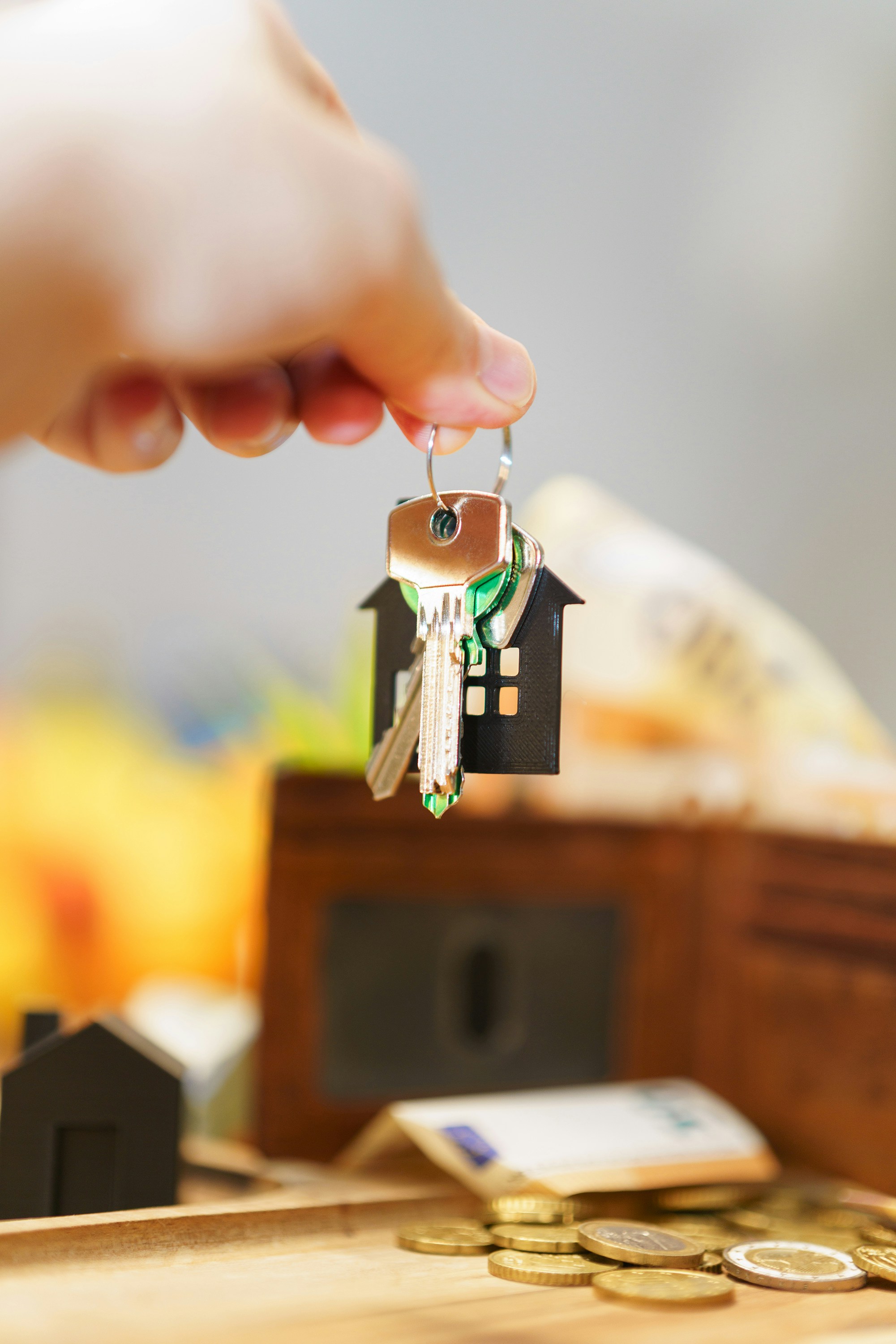Build-to-Rent Communities Set to Dominate in 2026

The Build-to-Rent Era Is Here
The Build-to-Rent (BTR) movement has transformed from a rising trend into a defining force in modern housing. As affordability challenges intensify and lifestyle preferences evolve, Build-to-Rent communities have emerged as the clear frontrunner in residential development.
By 2026, analysts expect BTR to dominate new housing starts in key markets. The appeal is clear. Renters want the privacy and comfort of a single-family home combined with the convenience and amenities of multifamily living. Meanwhile, investors see stable returns, professional management, and long-term growth potential.
The result is a housing model that aligns with both economic realities and modern living standards. Build-to-Rent is not just a temporary solution to a housing shortage. It is a structural shift that will redefine how people live, invest, and operate in real estate for the next decade.
What Defines Build-to-Rent
Build-to-Rent communities are purpose-built neighborhoods designed exclusively for rental living. They are not traditional single-family homes placed on the rental market after being sold. Instead, they are developed from the ground up with renters in mind.
Typical Build-to-Rent communities feature:
- Professionally managed homes within a single, cohesive development
- Consistent architectural design and modern amenities
- Flexible lease terms
- Integrated technology for maintenance and communication
- A community-driven atmosphere with shared spaces such as pools, parks, and coworking lounges
This model creates consistency in quality, reduces operational complexity, and delivers a superior resident experience.
Why Build-to-Rent Is Poised for Dominance
Housing Affordability Pressures
The American dream of homeownership is slipping out of reach for many. Rising mortgage rates, escalating home prices, and limited inventory have created the most challenging affordability environment in more than a decade.
Build-to-Rent fills the gap between ownership and traditional renting. It offers residents a high-quality home without the upfront costs, mortgage commitments, or maintenance responsibilities associated with buying. For families, professionals, and retirees alike, BTR provides stability and flexibility in uncertain times.
Evolving Demographics and Lifestyle Choices
Younger generations are redefining what it means to have a home. Millennials and Gen Z value convenience, mobility, and access to amenities over the idea of long-term ownership. Many prefer the freedom to move without being tied to a mortgage or property sale process.
At the same time, older adults are downsizing and seeking low-maintenance options that allow them to maintain a high quality of life. Build-to-Rent communities serve both ends of the spectrum by combining independence with convenience.
Institutional Investment and Market Confidence
Institutional investors have identified Build-to-Rent as a stable, recession-resistant asset class. Large investment firms, private equity groups, and real estate trusts are allocating significant capital to BTR projects.
This surge in investment is driving professionalization across the sector. Developers can now access better financing, technology platforms, and data insights, which enhance scalability and performance. Institutional confidence also signals a long-term belief in BTR’s profitability and resilience.
Innovation in Technology and Operations
Technology has elevated the Build-to-Rent experience for both residents and operators. Smart home features, online leasing, automated maintenance systems, and predictive analytics have made BTR communities more efficient and appealing.
Operators use real-time data to forecast maintenance needs, track leasing activity, and enhance resident satisfaction. These innovations translate to lower operational costs and stronger Net Operating Income (NOI), creating a competitive edge over traditional rentals.
Build-to-Rent vs. Traditional Rentals
Build-to-Rent communities differ from traditional rental housing in three key areas: design, management, and experience.
Design and Planning:
Traditional rentals often consist of scattered single-family homes or apartment units built for sale. Build-to-Rent developments are master-planned to provide consistent design, energy-efficient construction, and neighborhood-level amenities.
Management:
Individual landlords can vary in responsiveness and quality. Build-to-Rent communities are professionally managed, ensuring standardized maintenance, faster response times, and higher resident satisfaction.
Resident Experience:
BTR residents benefit from a cohesive community environment. Amenities such as walking trails, dog parks, and shared gathering spaces foster connection and engagement, transforming renting into a lifestyle choice rather than a temporary arrangement.
Economic Indicators Point to a BTR Surge in 2026
Expanding Construction Pipelines
Industry data shows that Build-to-Rent construction is accelerating nationwide. Developers are strategically focusing on high-growth regions with strong demand for single-family rentals.
The Sun Belt continues to lead the charge, with markets such as Dallas, Atlanta, Phoenix, and Tampa seeing rapid expansion. These areas combine population growth, land availability, and economic opportunity, making them ideal for large-scale BTR developments.
As construction pipelines expand through 2025, 2026 will mark a turning point where Build-to-Rent communities outpace traditional multifamily starts in several markets.
Resilient Investor Interest
Even as capital markets fluctuate, Build-to-Rent remains a favored asset among institutional investors. The model’s predictable cash flow and consistent occupancy rates provide insulation from economic volatility.
Investors also appreciate that BTR aligns with long-term demographic shifts. As the renting population grows, Build-to-Rent delivers both yield stability and portfolio diversification.
Policy Support and Zoning Adjustments
Local governments are beginning to recognize the role BTR can play in addressing housing shortages. Cities are adopting more flexible zoning policies to support rental-focused developments.
This policy momentum is crucial for sustaining growth through 2026. Municipal cooperation helps accelerate approvals, reduce development barriers, and attract new investment into markets that need housing diversity.
The Renter’s Advantage
Quality Without Ownership Pressure
Build-to-Rent homes give residents access to modern, energy-efficient housing without the financial or logistical weight of ownership. Renters can enjoy privacy, outdoor space, and premium amenities that are typically out of reach in urban apartment living.
Convenience and Community
Renters increasingly value lifestyle and connection. Build-to-Rent communities often include fitness centers, pools, playgrounds, and social areas that foster relationships and create a sense of belonging.
Professional management ensures a seamless living experience. Maintenance requests are handled promptly, and communication channels are streamlined through digital tools. The result is a resident experience that rivals high-end multifamily properties.
Flexibility in a Fast-Changing World
The modern workforce is mobile. Remote work and career flexibility have reshaped how people choose where to live. Build-to-Rent provides adaptable lease options that suit these evolving lifestyles.
Renters can relocate with ease or move within the same operator’s portfolio when their circumstances change. This adaptability makes BTR particularly appealing to professionals, families, and retirees alike.
Developers and Operators: Strategies for Capturing the 2026 Opportunity
Smart Site Selection
Developers who succeed in the BTR space understand the importance of location. Targeting suburban markets near employment hubs and strong school districts delivers the best balance of affordability and demand.
Emerging secondary markets are also becoming attractive. As major metros saturate, suburban corridors with population growth and infrastructure investment present new opportunities for Build-to-Rent expansion.
Design for Durability and Efficiency
The long-term success of BTR communities depends on quality construction and sustainability. Homes built with durable materials and energy-efficient systems reduce maintenance costs while meeting growing consumer demand for environmentally conscious living.
Smart home technology further enhances appeal and operational savings. Features like remote thermostats, security systems, and digital locks improve both convenience and energy management.
Operational Excellence Through Data
Data-driven operations are at the core of successful Build-to-Rent management. Predictive analytics can identify maintenance needs before they become costly issues, track resident satisfaction, and optimize pricing strategies.
Leveraging technology to unify leasing, maintenance, and communication creates efficiency at scale. Operators who integrate automation and analytics will lead the market by maximizing performance while maintaining a superior resident experience.
Predictive Analytics: The New Competitive Edge
Build-to-Rent operators are increasingly turning to predictive analytics to make smarter business decisions. By examining patterns in leasing behavior, payment history, and maintenance requests, they can anticipate trends before they affect performance.
This proactive approach enables better forecasting for occupancy, rent growth, and operational expenses. Predictive tools also allow for targeted marketing, ensuring that communities attract and retain ideal residents.
As the sector matures, data intelligence will separate the top-performing BTR operators from the rest. In 2026, those who master predictive analytics will set the new standard for operational excellence.
Challenges Facing Build-to-Rent Expansion
Rising Construction Costs
Inflation and material shortages continue to affect development timelines and budgets. Developers must adopt creative strategies, including modular construction and bulk procurement, to control costs and maintain profitability.
Zoning and Community Resistance
Some municipalities remain cautious about rental-heavy developments. Overcoming these challenges requires education, transparency, and collaboration with local stakeholders to demonstrate how BTR communities add value and stability to neighborhoods.
Maintaining Consistency Across Portfolios
As operators scale portfolios across multiple regions, maintaining consistent service quality becomes more complex. Investing in unified management platforms and strong brand standards will be essential for preserving reputation and resident trust.
Looking Toward 2026 and Beyond
The Build-to-Rent sector is no longer a fringe segment of real estate. It has become a central pillar of housing innovation. As 2026 approaches, the momentum behind BTR continues to build across every layer of the market.
Economic fundamentals, renter demand, and institutional confidence all point to sustained growth. Developers and investors who prioritize technology, sustainability, and community-focused design will shape the next evolution of residential living.
The future of housing will not be defined by ownership versus renting, but by experience, quality, and flexibility. Build-to-Rent represents that balance.
Conclusion
Build-to-Rent communities are transforming how people think about home, lifestyle, and investment. They merge the benefits of ownership with the flexibility of renting, all within a professionally managed environment.
By 2026, BTR is set to dominate new residential development across the United States. The combination of affordability challenges, lifestyle changes, and technological innovation makes this model the most adaptive and resilient in today’s real estate landscape.
For developers, investors, and operators, the message is clear: the Build-to-Rent revolution is here, and the time to act is now. Those who innovate, invest wisely, and deliver exceptional resident experiences will define the next era of modern living.


